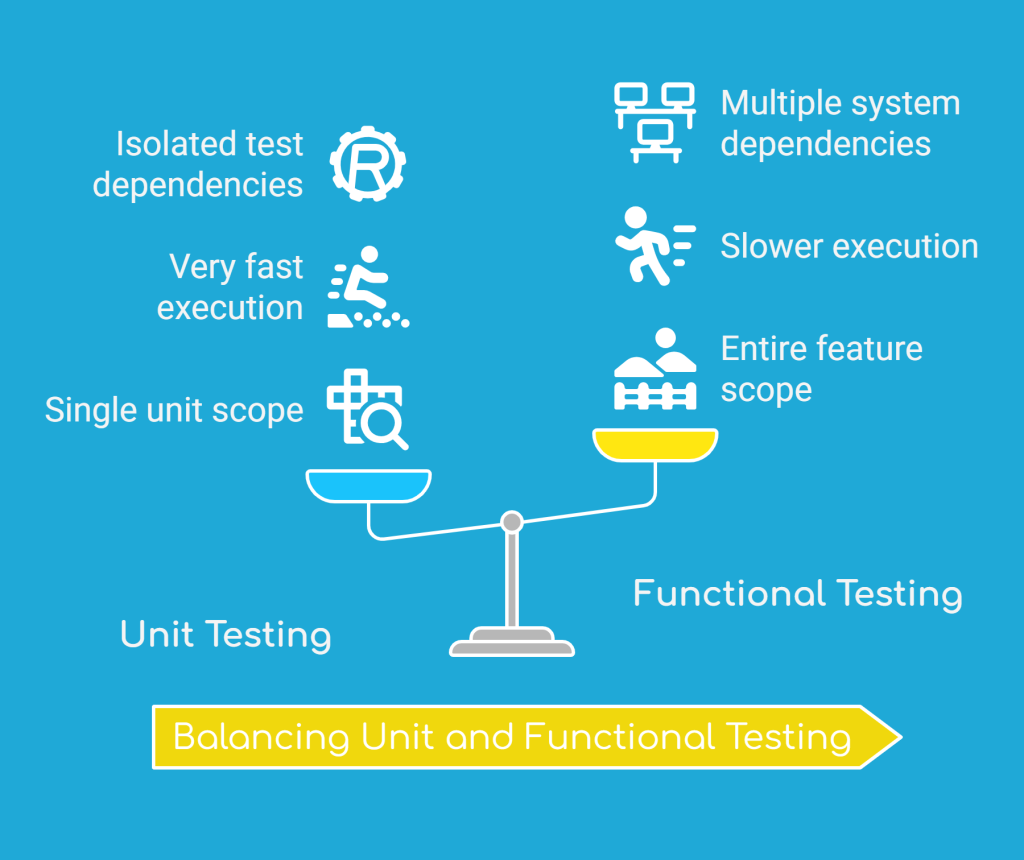In today’s modern software program development, quality assurance is not optional—it’s a necessity. Bugs in manufacturing can bring about misplaced customers, broken reputations, and luxurious rollbacks. That’s why testing performs a vital function in each improvement lifecycle.
However, on the subject of functional vs unit testing, many developers have differences. Are they interchangeable? When must you operate unit testing vs functional testing? How do they range in purpose, execution, and value?
This confusion is more than a technical detail; it can affect your entire QA strategy. Misapplying check sorts can cause blind spots in your code, unhandled edge cases, or negative overall performance under real-world usage.
In this complete guide, we’re going to break down the distinction between functional vs unit testing, make clear their respective roles within the testing hierarchy, and display how you may correctly observe each in your DevOps workflow.
Let’s dive into the arena of testing and discover ways to pick out the proper check at the proper time.

Unit Test vs Functional Test
Firstly, we have to understand separately unit tests and functional tests.
Get exclusive access to all things tech-savvy, and be the first to receive
the latest updates directly in your inbox.
Understanding Unit Testing
Unit testing is the practice of testing individual components or functions of your code in isolation to verify that they behave as expected.
Key Characteristics:
- Tests one unit of code (like a function or method)
- Fast and easy to automate
- Written by developers
- Doesn’t depend on external systems like databases or APIs
Example in Python:
def add(x, y):
return x + y
def test_add():
assert add(2, 3) == 5When to Use:
You can use unit testing:
- During development
- To catch logical or syntax errors earlier
- In continuous integration pipelines
Understanding Functional Testing
Functional testing provides you with an evaluation of an entire feature or system to verify it meets the specified requirements from an end-user perspective.
Key Characteristics:
- Tests a feature or flow, not just one unit
- May involve APIs, databases, and UI interactions
- Mostly written by QA engineers or testers
- Ensures the software delivers expected outcomes
Example:
A test that checks whether a user can successfully log in using valid credentials, involving front-end and back-end systems.
Unit Testing vs Functional Testing: Core Differences
| Feature | Unit Testing | Functional Testing |
| Scope | Single unit/function | Entire feature or workflow |
| Written By | Developers | QA/test engineers |
| Execution Time | Very fast | Slower (depends on external systems) |
| Test Dependencies | None (isolated) | Multiple system layers |
| Example Tool | JUnit, PyTest | Selenium, Postman, Cucumber |
The comparison of unit tests vs functional tests helps clarify why both serve different but complementary purposes.
Best Practices: Unit vs Functional Testing
Use Unit Tests for Speed
Run them after each decision to trap on-the-spot code issues.
Write Functional Tests for Critical Workflows
Login, checkout, registration—something that touches the person ought to work seamlessly.
Keep Them Separate

Don’t blur boundaries. Unit exams aren’t supposed to check UI or APIs.
Automate Both
Use CI/CD tools like GitHub Actions, Jenkins, or GitLab CI to run exams automatically.
Common Errors & Solutions
Writing Unit Tests That Depend on Databases
Solution: Mock outside structures to preserve exams isolated.
Overlapping Unit and Functional Tests
Solution: Define clean testing barriers in your documentation.
Not Updating Tests When Code Changes
Solution: Use model management hooks or CI triggers to validate exams continuously.
Role of CyberPanel in Supporting Testing

CyberPanel is a web hosting control panel and not a testing tool. However, it performs an essential function in putting in place the surroundings for your checks to succeed.
How CyberPanel Helps:
- Staging Environments: Easily spin up and test on servers for running functional tests.
- PHP/MySQL Stack: Deploy and test databases quickly.
- Automation Ready: Integrate testing tools through the command line or Git repositories.
- LiteSpeed Server: Boosts testing in the surrounding performance.
CyberPanel gives builders and QA engineers a fast, efficient, and stable infrastructure to host testing environments without complicated DevOps steps.
FAQs: Functional vs Unit Testing
1. Can I bypass unit testing to see if I have functional tests?
No. Unit testing captures low-stage insects early and is quicker to run.
2. Are functional tests constantly slower than unit testing?
Yes, due to the fact that they contain a couple of additives like UI, database, etc.
3. What’s the ratio of unit to functional test in a very good project?
A not unusual place advice is 70% unit, 20% integration, and 10% functional.
4. Which tools can I use for both?
5. Can I run unit and functional tests within the same CI/CD pipeline?
Yes. Just configure tiers so unit exams run first, observed with the aid of unit or functional tests.
Wrapping Up!
Understanding the testing between functional testing vs unit testing isn’t simply academic—it’s strategic. Unit checking out guarantees that the person’s code blocks do what they should. Functional testing verifies that capabilities are carried out efficiently from an end-user’s perspective.
Use both, and use them wisely.
Start Building Quality Software Today!
Need strong performance and seamless test environments? Use CyberPanel to streamline your improvement and QA pipeline—from nearby testing to full-stack deployments.



